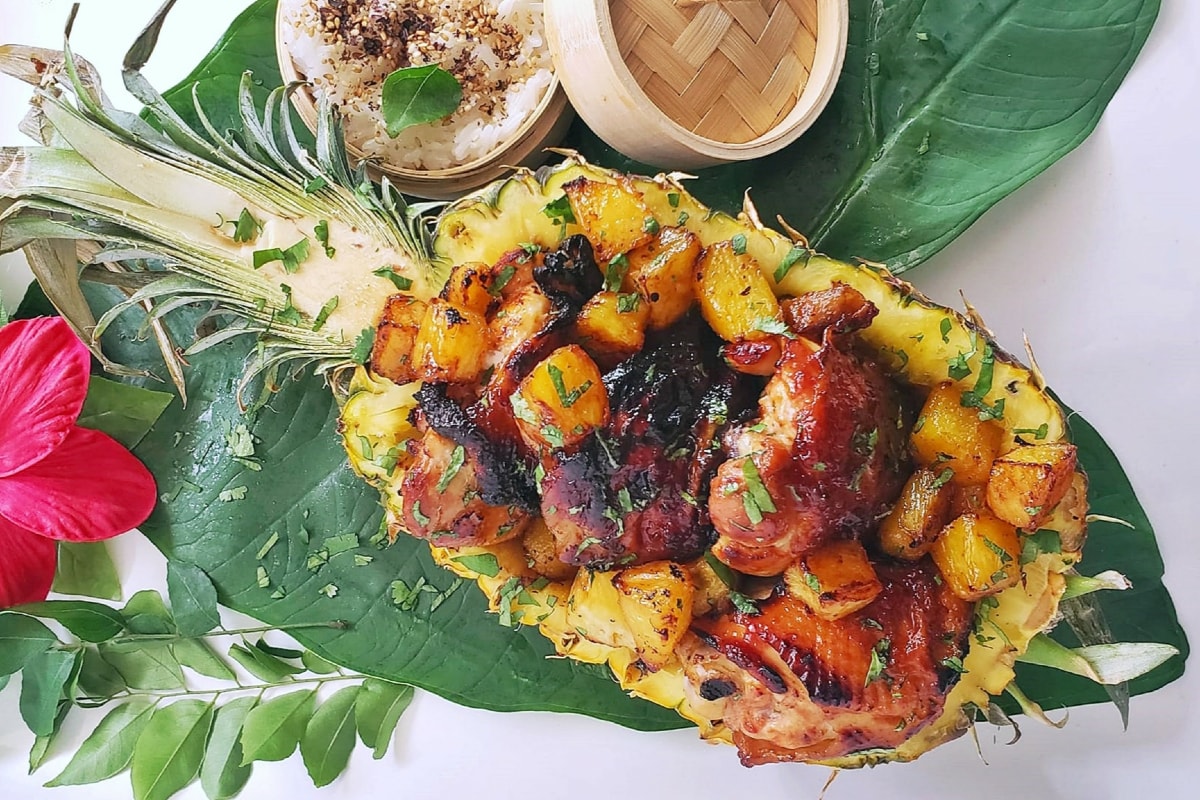Chicken in Sweet and Sour Sauce
- Easy
- 60 min

Aloha! Welcome to one of the most popular Hawaiian recipes. Virtually most food trucks across the Islands serve a version or other of Huli Huli chicken dish. It was invented in 1954 by a naval officer, Honolulu based Ernest Morgado. The businessman created a teriyaki-ish sauce inspired by his mother's recipe. Apparently he poured it over some chicken to be served to the local market and the response was an instant success. Huli Huli chicken was such a hit, that it is said that while waiting to purchase the plate at the market the locals started shouting "Huli! Huli!" which in Native Hawaiian means "to turn around". What they meant was that the chicken on the spit was cooked on one side, and needed turning. Since then, the term "Huli Huli chicken" refers to the sauce, but not necessarily to the cooking method.
The original recipe involves also a dry rub on the chicken but the spirit of this version is to have a quick, no fuss recipe that tastes as good as the one you could buy at a food truck in Hawai'i without too much work. So, what could be better than the air fryer?
Mahalo Nui Loa
The brine is important to tenderize the chicken, and can be prepared as long as a day ahead, or for a mininum of 3 hours.
Bring the water, and the rest of the ingredients to a simmer, enough for the salt and the sugar to dissolve.
Cool, pour over the chicken and refrigerate overnight for best results.
When ready to cook, remove chicken from the brine as needed.
Mix pineapple juice, brown sugar, soy sauce, ketchup, ginger, garlic, Worchestershire sauce and Mirin and bring to a simmer. Cook for about 5 minutes and set aside to cool.
Meanwhile, cut the pineapple in half. Using a pairing knife and a spoon (better if serrated like a grapefruit spoon) remove the core from one half.
Cut the core in large 1" chunks.
Pre-heat air fryer to 400°F. Brush with vegetable oil and place the fresh pineapple chunks in one single layer. Now lightly spoon some of the Huli Huli sauce of the pineapple and shake the basket. Bake for about 12 minutes or until the chunks are lightly charred. Remove and reserve on a plate.
After you have removed the chicken from the brine, pat it dry.
Place half of the Huli Huli sauce in a separate bowl to avoid cross contamination and reserve it for the final glazing.
Coat the chicken with half of the Huli Huli sauce, massage to make sure you reach into all "nooks and crannies".
Place in the oiled air fryer basket in a single layer, skin up. Cook at 400°F for about 10 minutes.
Glaze using the sauce untouched by the raw chicken and cook a few minutes more (depends on the size of the chicken thighs) until internal temperature reaches 165°F.
Arrange the cooked chicken inside the carved pineapple and add the chunks of charred fresh pineapple all around.
Sprinkle with fresh chopped cilantro if you like.
Serve immediately with the leftover sauce on a side.